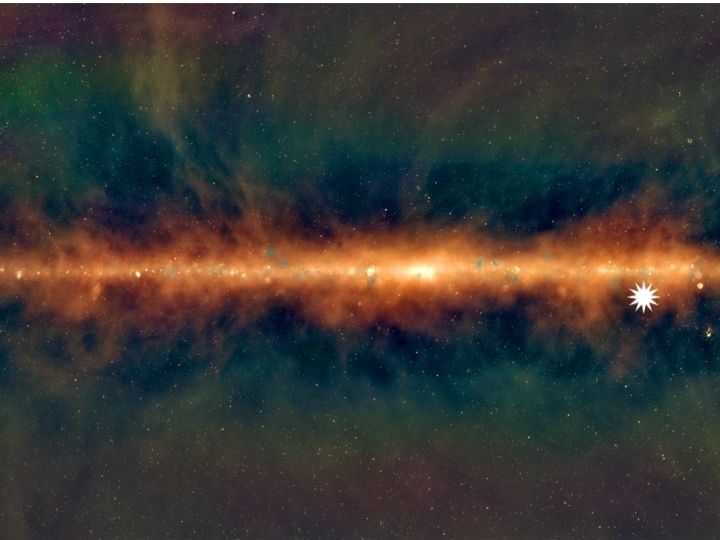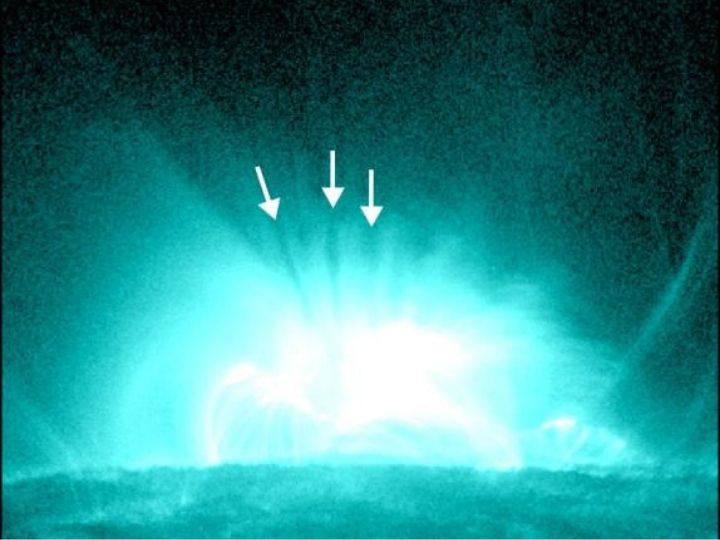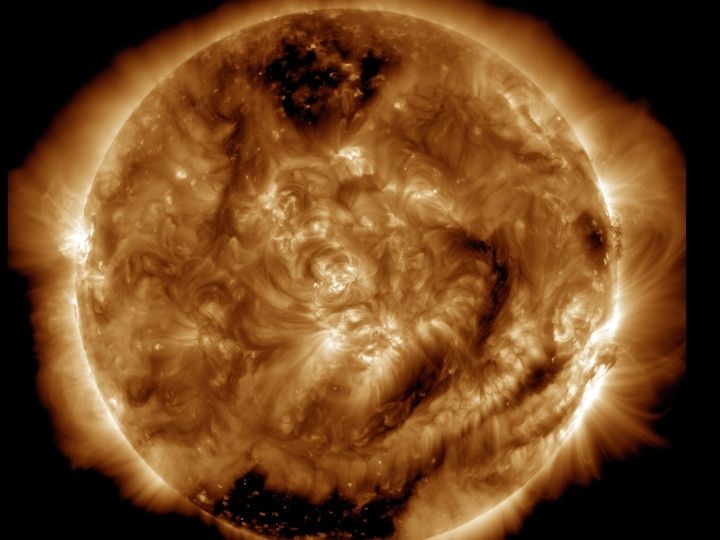Never-Seen-Before Cosmic Object In Milky Way To A Solar Flare Mystery — Top Science News Of The Week
Here is a compilation of interesting science news reported over the past week.

New Delhi: Scientists have accomplished several marvels in the field of astronomy, but a huge number of cosmic entities are yet to be known. This week, astronomers have discovered unusual phenomena occurring in the universe, and have unraveled some mysteries of the cosmos.
ABP Live brings you the most interesting science news reported over the past week.
Never-Seen-Before, Mysterious Cosmic Object In Milky Way
An international team of astronomers has recently discovered a mysterious cosmic object in the Milky Way. The unique entity releases energy three times an hour, and is something astronomers have never seen before.
The findings of the study, led by researchers at the International Centre for Radio Astronomy Research (ICRAR) in Perth, Western Australia, were recently published in the journal, Nature.
The team believes the object could be a neutron star or a white dwarf, which is a collapsed core of stars, with an ultra-powerful magnetic field. The strange object is spinning in space, and sends out a beam of radiation that crosses Earth's line of sight, the study said. It is one of the brightest radio sources in the sky for one in every 18.18 minutes. The unusual periodicity has not been observed previously, the authors noted in the study.
Astrophysicist Dr Natasha Hurley-Walker, the lead author of the study, said that the object was appearing and disappearing over a few hours during the observations, and was completely unexpected, according to a statement issued by ICRAR. She said it was kind of spooky for an astronomer because there is nothing known in the sky that does that.
The mysterious object is really close to us, about 4,000 light-years away, in our galactic backyard, and was discovered by a student from Curtin University using the Murchison Widefield Array (MWA) telescope in outback Western Australia, and a new technique he developed. He said it is exciting that the source he identified last year turned out to be such a peculiar object.
The GaLactic and Extragalactic All-sky MWA survey team, or ‘GLEAM’ for short, is involved in the research.

The object is linearly polarised, bright, persists for 30 to 60 seconds on each occurrence, and is visible across a broad frequency range, the study said. The findings suggest it could be an ultra-long-period magnetar, which is a neutron star with a much stronger magnetic field than ordinary neutron stars.
Astronomers Explain Decades-Long Mystery Associated With Solar Flares
Scientists had observed mysterious objects within a solar flare in January 1999. The solar flare, unlike typical flares that show bright energy erupting outwards from the Sun, also displayed a downward flow of motion. This made it appear as though the material was falling back towards the Sun.
Astronomers described the objects as "downward-moving dark voids", and wondered what they were seeing.
Now, astronomers at the Center for Astrophysics | Harvard & Smithsonian (CfA) have recently offered a new explanation for the poorly understood downflows. The study was published this week in the journal, Nature Astronomy.
The scientific community now describes the objects as supra-arcade downflows (SADs).

These are plasma voids travelling towards the Sun, and are sometimes observed in the Sun's outer atmosphere, or corona, during solar flares. SADs are byproducts of the magnetic reconnection processes that drive solar flares. They are generally dark, sunward-propagating features located above the bright arcade of loops in some solar flares, reported mostly during the decay phase, or the third and final stage of solar flares, according to a study published in the journal, Astronomy & Astrophysics.
Chengcai Shen, the lead author of the study, described the structures as "dark finger-like features", according to a statement issued by CfA. Shen said the astronomers wanted to know how the structures occur, and what is driving them, and whether they are truly tied to magnetic reconnection.
Since their discovery in the 90s, scientists have assumed that SADs are tied to magnetic reconnection, and that the process occurs when magnetic fields break, releasing fast moving and extremely energetic radiation, and then reform.
Kathy Reeves, a co-author of the study, said that a lot of magnetic fields are pointing in all different directions on the Sun, and eventually, the magnetic fields are pushed together to the point where they reconfigure and release a lot of energy in the form of a solar flare. She added that it is like stretching out a rubber band and snipping it in the middle. It is stressed and stretched thin; hence, it is going to snap back, she said.
The dark downflows were assumed to be signs of the broken magnetic fields "snapping back" to the Sun after a solar flare eruption.
However, there was a catch. Bin Chen, a co-author of the study, said that most of the downflows observed by scientists are "puzzingly slow", and explained that this is not predicted by classic reconnection models, which show the downflows should be much quicker. Shen said it is a conflict which requires some other explanation.
Hence, the team analysed downflow images captured by the Atmospheric Imaging Assembly (AIA) onboard NASA's Solar Dynamics Observatory. The AIA takes images of the Sun every twelve seconds in seven different wavelengths of light to measure variations in the Sun's atmosphere.
The astronomers made 3D simulations of solar flares and compared them to the observations. They found that most SADs are not generated by magnetic reconnection, and instead form on their own in the turbulent environment, and are the result of two fluids with different densities interacting.
Reeves explained that it is like seeing the same thing that happens when water and oil are mixed together. The two different fluid densities are unstable and ultimately separate.
Reeves said that the dark, finger-like voids are actually an absence of plasma, and that the density is much lower than the surrounding plasma.
Antarctic Ice Cores Provide Evidence Of 9,200-Year-Old Extreme Solar Storm
A team of researchers led by Lund University in Sweden has found evidence of an extreme solar storm that occurred about 9,200 years ago, through analyses of ice cores from Greenland and Antarctica. The study was recently published in the journal, Nature Communications.
The astronomers were puzzled because the storm took place during one of the Sun's more quiet phases. This is because the Earth is believed to be less exposed to such events during the more quiet phases of the Sun.
Solar storms are believed to be more likely during an active phase of the Sun, or the solar maximum, during the sunspot cycle. The new study, however, shows that this may not always be true for very large storms.

Raimund Muscheler, a researcher at Lund University, said that the astronomers studied drill cores from Greenland and Antarctica, and discovered traces of a massive solar storm that hit Earth during one of the Sun's passive phases about 9,200 years ago, the University said in a statement.
The scientists studied the drill cores for peaks of the radioactive isotopes beryllium-10 and chlorine-36, which are produced by high-energy cosmic particles that reach Earth, and can be preserved in ice and sediment, the study said.
Muscheler said that the peak indicated a hitherto unknown giant solar storm in connection with low solar activity.
A similar solar storm occurring today could have devastating consequences, including power outages, radiation damage to satellites, and could pose a danger to astronauts.
Related Video
Southern Rising Summit 2024: How Important is Self-Awareness? Insights from Anu Aacharya | ABP LIVE






































